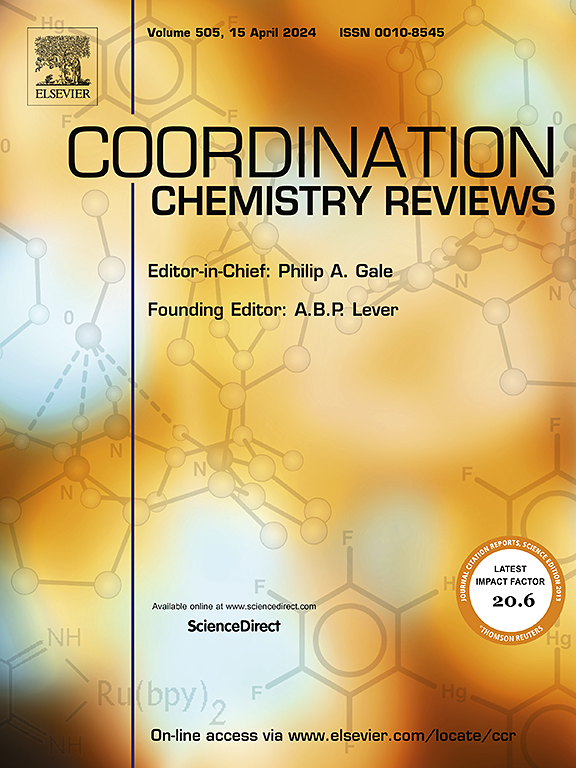Recent progress and advancement on zinc-based materials for water splitting: Structure-property-performance correlation
IF 20.3
1区 化学
Q1 CHEMISTRY, INORGANIC & NUCLEAR
引用次数: 0
Abstract
The ongoing energy upheaval and atmospheric pollution are among the most pressing challenges facing society today. To address these issues, the establishment of effective methods for electrochemical energy conversion offers a promising path forward. Recently, Zn-based materials have attracted a lot of interest as possible solutions in this field. Their appeal relies upon their precisely modified structural and electronic features, three-dimensional architectures, extensive surface areas, numerous active sites, robust stability, and enhanced mass transport and diffusion characteristics. They are very well suited for use in energy conversion and storage because of these characteristics. Several papers have been published over the past few years, which are investigating the potential of Zn-based materials in various techniques for energy conversion. However, no comprehensive review is available, that systematically discusses the Zn-based materials for energy conversion. This review offers a thorough examination of the advancements in Zn-derivatives for applications in key energy conversion processes, including hydrogen evolution reaction (HER) and oxygen evolution reaction (OER) involving electrochemical, photoelectrochemical, and photocatalytic water splitting. The review delves into the electrical as well as structure-related features, and performance of Zn-based materials, highlighting the role of modulating structural, morphological, and electronic properties in enhancing catalytic activity. Furthermore, the structure-property-performance relationship has been discussed in the context of improving activity, stability, and overall efficiency in water-splitting applications. The review addresses the challenges and possible directions for the industry going ahead while highlighting the potential of zinc-based materials to support the invention of environmentally conscious water-splitting technology.
求助全文
约1分钟内获得全文
求助全文
来源期刊

Coordination Chemistry Reviews
化学-无机化学与核化学
CiteScore
34.30
自引率
5.30%
发文量
457
审稿时长
54 days
期刊介绍:
Coordination Chemistry Reviews offers rapid publication of review articles on current and significant topics in coordination chemistry, encompassing organometallic, supramolecular, theoretical, and bioinorganic chemistry. It also covers catalysis, materials chemistry, and metal-organic frameworks from a coordination chemistry perspective. Reviews summarize recent developments or discuss specific techniques, welcoming contributions from both established and emerging researchers.
The journal releases special issues on timely subjects, including those featuring contributions from specific regions or conferences. Occasional full-length book articles are also featured. Additionally, special volumes cover annual reviews of main group chemistry, transition metal group chemistry, and organometallic chemistry. These comprehensive reviews are vital resources for those engaged in coordination chemistry, further establishing Coordination Chemistry Reviews as a hub for insightful surveys in inorganic and physical inorganic chemistry.
 求助内容:
求助内容: 应助结果提醒方式:
应助结果提醒方式:


